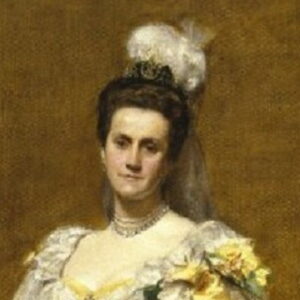Emily Warren Roebling was a female engineer primarily responsible for directing the Brooklyn Bridge’s construction. She was married to the civil engineer and Chief Engineer during the construction of the Brooklyn Bridge, Washington Roebling. To assist her spouse in his career, she studied civil engineering topics such as material strength, stress analysis, and cable construction. She had an interest in and knowledge of bridge construction prior to her husband’s promotion to Chief Engineer. When her spouse became ill with caisson disease, her knowledge of the topic proved invaluable. As the disease progressed, he became increasingly debilitated, requiring Emily to assume the majority of his engineering responsibilities in the bridge’s construction. She planned the continued construction of the bridge with her spouse and managed the day-to-day construction activities. During the course of her work, she interacted with legislators, engineers, and others associated with the bridge, and she was recognized as the engineer primarily responsible for directing the Brooklyn Bridge’s construction. She supervised the construction of the bridge for years and functioned as an effective spokesperson for her husband.
Youth and Early Life
Emily Warren was born on September 23, 1843, in Cold Spring, New York, as the second smallest of Sylvanus and Phebe Warren’s 12 children. Her father was a municipal supervisor and state assemblyman. She had a close relationship with her older sibling, Gouverneur K. Warren.
She was intelligent and inquisitive from an early age, and she desired a formal education. She attended a convent school in Washington and was completely supported in her intellectual pursuits by her older brother.
A Final Years
Eventually, her sibling graduated from the United States Military Academy at West Point and served as a corps commander during the American Civil War. Emily met and married a member of her brother’s engineering staff, Washington Roebling.
John Augustus Roebling, the prominent civil engineer and father-in-law of Emily’s husband, designed the Brooklyn Bridge. Emily and her engineer husband traveled to Europe to research the use of caissons for the bridge as he began construction.
In the meantime, her father-in-law’s foot was injured in a freak accident when a ferry trapped it against a piling. Due to the tetanus infection caused by the amputation of his crushed digits, his health deteriorated rapidly. Realizing he would not survive, he appointed Washington Roebling as project manager.
After his father’s passing, Washington took over and immersed himself in the endeavor. During his employment, he developed caisson disease, which rapidly progressed and rendered him bedridden. At this juncture, Emily began to assume a greater role in the bridge construction to assist her husband.
Intelligent and well-read, she was already familiar with the fundamentals of bridge construction. Now that she began to read more about the topic, she acquired a vast understanding of topics such as material strength, stress analysis, and cable construction.
She actively participated in the construction of the bridge, assuming many of the chief engineer’s responsibilities. Together with her husband, she oversaw the day-to-day operations and continued construction of the bridge. She was also responsible for interacting with politicians and others associated with the bridge.
In 1882, it was questioned whether Washington was qualified to serve as Chief Engineer. During this period, Emily served as her husband’s spokesperson and represented him at events. The politicians retained Washington as the Chief Engineer of the Brooklyn Bridge, which was ultimately completed in 1883, after being impressed by her work. She rode the first carriage across the bridge from the Brooklyn side, carrying a rooster as a symbol of triumph, prior to the bridge’s official opening.
She became prominent in various social and philanthropic organizations such as the Relief Society and the Daughters of the American Revolution following the completion of the bridge. She also served on the New Jersey Board of Lady Managers for the World’s Columbian Exposition.
She received a certificate in business law from the Woman’s Law Class at New York University in 1899, remaining a lifelong student. In addition, she traveled extensively and gave numerous lectures until her passing.
Emily’s Major Opera
Emily Warren Roebling is renowned for her contribution to the construction of the Brooklyn Bridge, which spans the East River and connects the boroughs of Manhattan and Brooklyn. In 1972, the bridge, which is considered an icon of New York City, was designated a National Historic Civil Engineering Landmark.
Personal History and Legacy
During the Civil War, Emily’s sibling was serving with the Fifth Army Corps. During her 1864 visit, she encountered Washington Roebling, a member of her brother’s staff. The couple fell in love and wed on January 18, 1865. This union resulted in the birth of a single male. She was a world traveler who remained active until her death. On February 28, 1903, she perished.
Estimated Net Worth
Unknown.


